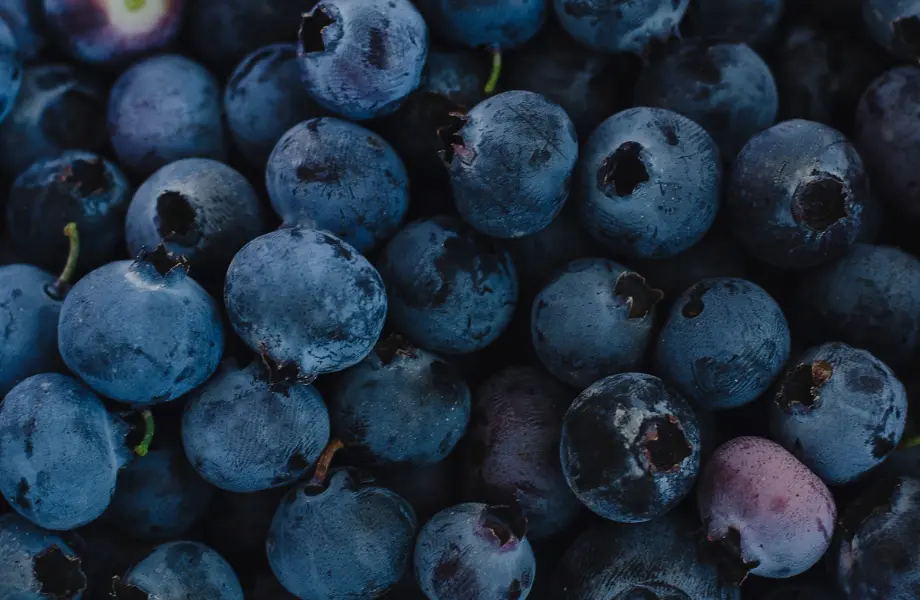After more than a decade of the so-called "blue wave," the blueberry industry in the United States continues to experience a surge in production. "But don't worry, no one will be swept away by the wave and drown": this is the reassuring message from one of the industry leaders.
"Thereis still a lot of market outthere," said Kasey Cronquist, president of the U.S. Highbush Blueberry Council and the North American Blueberry Council. If the industry is going to develop this market properly, it will need more blueberries."
That's where Sustainable Ag Ventures comes in. The California-based agricultural investment team is planting a blueberries farm in Othello, Washington, which, when completed, will be among the largest producers in the world.
Washington is already the leading domestic producer. Production has increased fivefold in the past 12 years, according to U.S. Department of Agriculture statistics. "And guess what, Washington is planting blueberries in bursts," said Alan Schreiber, executive director of the Washington Blueberry Commission. "Washington has some of the largest blueberries plantations in the world."

THERE IS STILL ROOM IN THE MARKET
Many growers are understandably concerned about overproduction. Some have set aside acreage in other parts of the Northwest and in Michigan, once the nation's largest producer, as larger farms handle a larger share of the crop.
But Cronquist assures producers that there is room to grow, provided the industry innovates. Market studies show that blueberries penetrate about 38 percent of U.S. households, compared with strawberries, which exceed 70 percent. "We have not yet tapped the full potential," Cronquist said.
He delivered this message of encouragement at the industry's semi-annual meeting in Washington in March, when the industry faced a record supply of frozen berries. Then came the pandemic, which sent demand for frozen blueberries skyrocketing.
But Cronquist believes demand for blueberries fresh and processed will remain high if the industry innovates with technology, new retail opportunities and exports.
Growers, including the Othello company, are using mechanical binders to reduce the labor cost of producing blueberries fresh in the market, while equipment manufacturers are building binders with soft materials and sorting machines with optical technology to increase the quality of fresh packages.
The U.S. Highbush Blueberry Council is collaborating with a chef agency that develops recipes for volume-boosting opportunities in food services, such as barbecue sauces.
On the export front, the Philippines and China recently opened their markets to fresh U.S.-based blueberries , an effort the supply chain has been working on for 20 years, Cronquist said.

WASHINGTON
Washington leads in national production, followed by Oregon.
In 2019, the United States produced 680.7 million pounds of blueberries (308,760 tons n .d.t.) on 102,700 acres (41,561 hectares n.d.t.), while Washington produced 163 million pounds (73,935 tons n.d.t.) on 16,700 acres (6,758 hectares), according to U.S. Department of Agriculture statistics. The Washington Blueberry Commission estimates an area of 22,300 acres (9024 hectares n.d.t.).
In any case, the potential for producing organic products is what caught the attention of the group of investors who planted the new farm, called Othello Blueberry LLC, said Lyla Oyakawa, one of the partners. Roy Farms of Moxee, Washington, near Yakima, is an operating partner in the venture, Oyakawa said.
The farm will be entirely organic. Eastern Washington lends itself to organic production, having relatively ample irrigation, low pest pressure and few diseases. Oyakawa said they plan to use falconers for bird pressure and some shade cloths.
About 500 acres (about 200 hectares n.d.t.) will produce a first crop this year, while workers have planted about 400 new acres (about 160 hectares n.d.t.) this year. Eventually, the company will rely heavily on mechanical harvesting, targeting the fresh market.
Oyakawa said this is not the only plant in Washington and Oregon supported by outside investment. Labor costs and other agricultural inputs require scale to be profitable. "These are all things that require a lot of capital and a lot of scale to capitalize," he said. Oyakawa declined to share production estimates.
However, the company will likely be one of the largest organic producers in the world, said Schreiber of the Washington Commission for blueberries , although larger companies in the state, in terms of acreage, come to mind.
In general, Washington yields average around 10,000 pounds per acre (11.2 tons per hectare n.d.t.). But in eastern Washington it is possible to get 25,000 pounds per acre ( 28.2 tons per hectare n.d. t.) for a modern, even organic planting, Schreiber said. With 1,300 acres (526 hectares n.d.t.), Othello Blueberry could produce more than 32 million pounds of berries ( 14,500 tons n.d.t.), nearly 20 percent of the state's current total.

EFFECTS ON SMALL FARMERS
Small growers struggle to keep up with this scale, said Mark Longstroth, fruit educator at Michigan State University.
Michigan was once the star of blueberries, with about half of the national crop in 1993 largely going to processing. But bushes aged in the humid climate in which the crop is traditionally grown produce about 5,000 pounds per acre, a fraction of the yields now being talked about in eastern Washington state.
Competition also comes from overseas. Peru's growing conditions allow high yields that fill the market in winter. "Now, if I walk into a store in midwinter, there are blueberries for sale that cost less than my guys can grow them," Longstroth said.
Small producers are also concerned in Washington, where growers' profits have fallen by about half in the past five to seven years, said Jeff Weijohn of Wapato.
Weijohn's family grows blueberries and packages them in partnership with a company in Portland, Oregon, on behalf of many other producers in the area who have been left without a packer due to the vertical integration of larger companies over the past decade. Their brand, Sorbatto Fresh, can be found in stores such as Target and Whole Foods. They also launched Sorbatto Blue Cream, a dairy-free ice cream alternative, as a way to diversify and add value.
The industry has faced tough times for 20 years and efficiency is now paramount, he said. But he agrees with Cronquist that there is room for expansion, even for smaller operators.
This year, however, Weijohn suffered a setback. He purchased a Korvan harvester, but the coronavirus pandemic has stopped the production factory. He will not receive it in time for harvest. "It's the price to pay for moving forward," he said.
Source: GoodFruit













